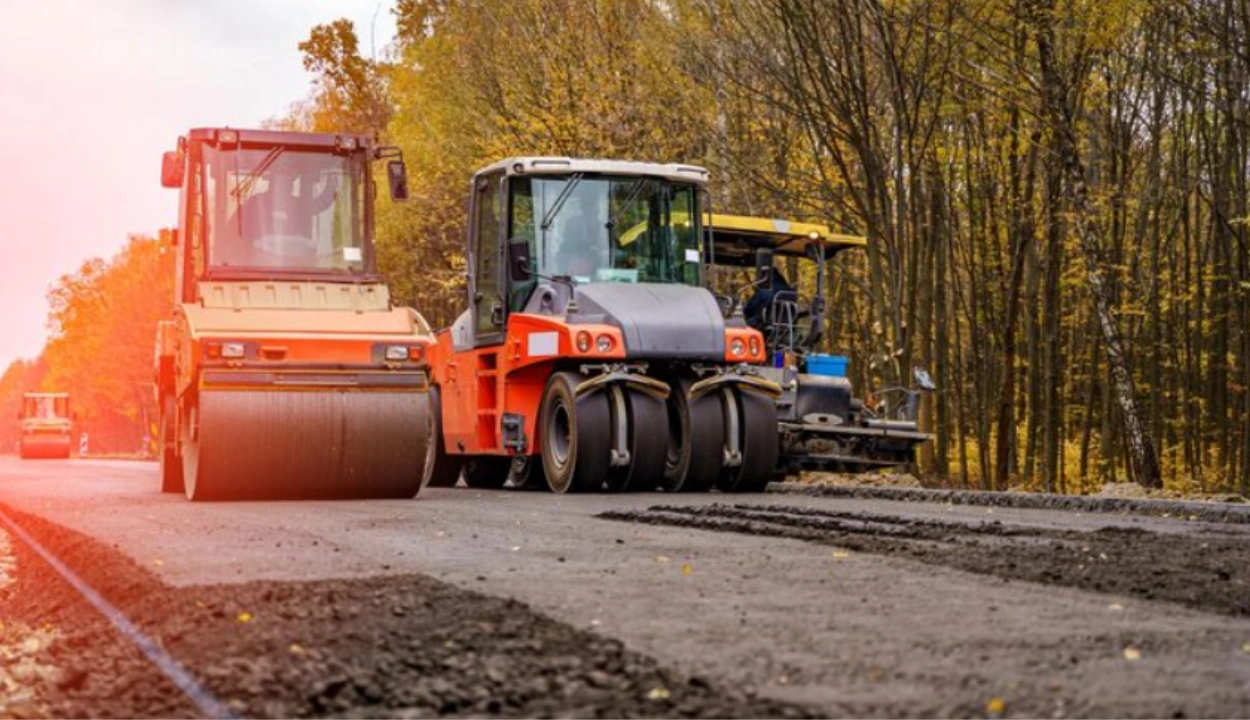What is an Equipment Checkout System & How Does It Work?
An equipment checkout system is essential to an efficient working zone and dramatically saves time and money. It is an equipment management system and a one-stop solution for tracking availability, organizing inventory, monitoring conditions, outlining rental costs, and monitoring equipment usage—all under one glass pane!
The analysis of the market value of equipment checkout systems, which is expected to increase from $1,604.68 million in 2020 to a whopping $4,391.99 million by 2030, makes it clear that it will become crucial soon.
This monitoring software benefits not only construction site owners or business holders but also allows staff/team members to input all data and essential information into a single database collection.
What is Equipment Checkout Software?
In simple terms, it would be called a 'check-in and checkout system' that allows its users to view availability, manage access, check for maintenance, and keep track of the condition of the material/tools being used on a construction site.
It would be right to call it an automated asset checklist that provides real-time location information of assets and their past and present users using bar codes, QR codes, or RFID tags.
The equipment checkout software gives its users and owners complete control over the usage and conditions of their assets across different worksites and the ability to complete projects on time.
How Does an Equipment Checkout System Work?
Reservation and scheduling
The equipment checkout system has a calendar-based interface that allows users to book tools/equipment in advance, avoiding any mix-ups and availability issues.
This feature makes it easy for the team to allocate tools where needed and record future usage.
Tracking
The most important aspect of check-in checkout software is that the owners know the real-time location of their equipment and tools. This feature makes it easier to rule out chances of theft and maintain a checklist of which employee is in charge of which asset.
It was noted that only in the year 2021 were 11,504 thefts reported on construction sites, making the equipment checkout software a much-needed database where all assets are tagged with barcodes, QR codes, and RFID tags for concrete visibility.
Reporting
This feature allows the user to view equipment usage, machine activity, health factors, and customized reports to make informed decisions about repairing or purchasing new parts/tools.
You can view fuel usage, idle hours, number of hours worked, fault codes, or receive alerts if equipment shows signs of malfunctioning.
Inventory management
A critical inspection tool specifically designed to uphold stock levels, upcoming maintenance, and any renewals needed. The inventory tool also plays a major role in aiding the calendar interface because it pairs the equipment with the schedule of fleet vehicles.
It also provides the date of purchase, previous maintenance history, and notifications regarding the catalog of the equipment ahead of time.
Payment Processes
Some companies utilize equipment by renting it out from other companies. Such organizations can benefit from the equipment checkout system by tracking purchases, billing information, upcoming rental agreements, and financial transactions.
This feature ensures fees are paid on time, invoices are created without error, and payment issues are avoided.
How Do You Utilize Equipment Checkout Software For the Best Outcome?
About 80% of the employees waste half an hour of their work time trying to retrieve data daily. Moreover, 43% of small businesses need help to track inventory effectively, resulting in huge losses and downtimes.
However, you can use Clue to optimize your work and easily collaborate with employees while being fully informed about your equipment's whereabouts and usage.
1. Locate equipment.
RIDF tags, GPS trackers, barcodes, and QR codes help you easily view the live location of a particular asset or equipment. This technology is superficial in aiding the working of fleet vehicles.
Your employees and workers can also easily schedule or view resources from the calendar on the equipment checkout system.
2. Keep a record of its users.
The tool checkout system keeps track of all of its past and present users, allowing you, as a business owner, to see who has custody of which item and retrieve the equipment when the rental period is about to be over. Furthermore, you can also pinpoint the last user of an asset if it is damaged or stolen.
3. Book equipment with full knowledge of the inventory
As mentioned previously, the calendar feature will allow you to avoid any hassles and efficiently allocate equipment to your workers.
Your employees can also book the assets according to the calendar schedule without the risk of double bookings.
4. Use Handheld devices
Even if you cannot afford RFID tags or barcode checkout systems, you can still use a smartphone or tablet to digitally track inventory and equipment users.
Software like Clue is dedicated to fast-tracking data while simultaneously allowing you to pair it with other types of software running under your hub.
Benefits of an equipment checkout software system
Keep real-time records
Get more visibility with real-time records, which give you instant updates on check-in and checkout tools, the location of assets/fleets, and their users.
The best part is that you don't have to worry about double bookings or sudden cancellations because everything is scheduled and presented on the equipment checkout system.
Ensure proper usage and handling of equipment.
Often, workers tend to mishandle the equipment or overlook the signs of repair/damage. Such instances can account for sudden downtime.
However, with Clue, you can view fuel usage, idle hours, hours worked, alerts for signs of repair, tips on increasing equipment lifetime, and maintenance updates.
Now, you don't have to worry about risking meeting deadlines or incurring extra costs to recover from downtime.
Work faster and meet deadlines.
Witness an increase in workflow when you pair your equipment with the equipment checkout system! According to a study by Aberdeen Group, companies using equipment tracking software experienced a 14% increase in equipment utilization. Another study showed that such software could save 22 minutes of work time per day per employee, which was previously spent rummaging for lost parts or misplaced tools.
Increase of accountability
Construction equipment theft is a very common issue amongst site owners, and even with the use of CCTV cameras and security guards, thieves tend to get away with a lot.
According to the NCIC, there were 11,574 reports of stolen items in 2016, and there were $1.04 billion worth of robberies during the first eight months of 2021 in the Pikes Peak region of Colorado.
Keep track of future maintenance schedules.
You can be tension-free about the accuracy of the checklists provided by the check-in checkout system because of reliable reports and a constant check-and-balance between the users and equipment availability.
Instant Alerts
Get instant alerts on your mobile phone or tablet if there is a malfunction, danger, missing parts, repairs, or an employee requiring a certain tool/asset.
It is easier to track down the equipment's location, retrieve it for instant use, and increase work efficiency.
Get Clue for efficient equipment checkout software!
If you are tired of scrolling endless Excel sheets or pinpointing the one accountable for damage/theft, then you should try Clue. This equipment checkout system will work wonders for you by aiding in the exemption of lost time, tracking your equipment effectively, and providing an effective workflow for your project.
FAQs
How does the software handle equipment maintenance and repairs?
Equipment maintenance management software proactively resolves issues and optimizes equipment scheduling. It automatically tracks and schedules maintenance based on time or usage, and enforces predefined job process flows to ensure maintenance tasks are completed efficiently.
Can the software integrate with other systems?
Yes, software integration involves combining different subsystems or components into a single, cohesive system. This ensures that the various components can communicate and work seamlessly together to achieve a common goal.
How does the system improve safety on construction sites?
A digital system improves safety on construction sites by enabling the Senior Management Team to monitor safety performance and compliance remotely. They can easily access real-time safety data and statistics, ensuring timely and informed decisions to maintain a safe working environment.
Is the software suitable for small construction companies?
Clue is an equipment checkout system tailored to a company's needs. While large companies tend to benefit greatly due to their vast networks, smaller construction businesses can also fully take advantage of the software by increasing work efficiency and reducing equipment loss.
Transform Your Equipment Management












